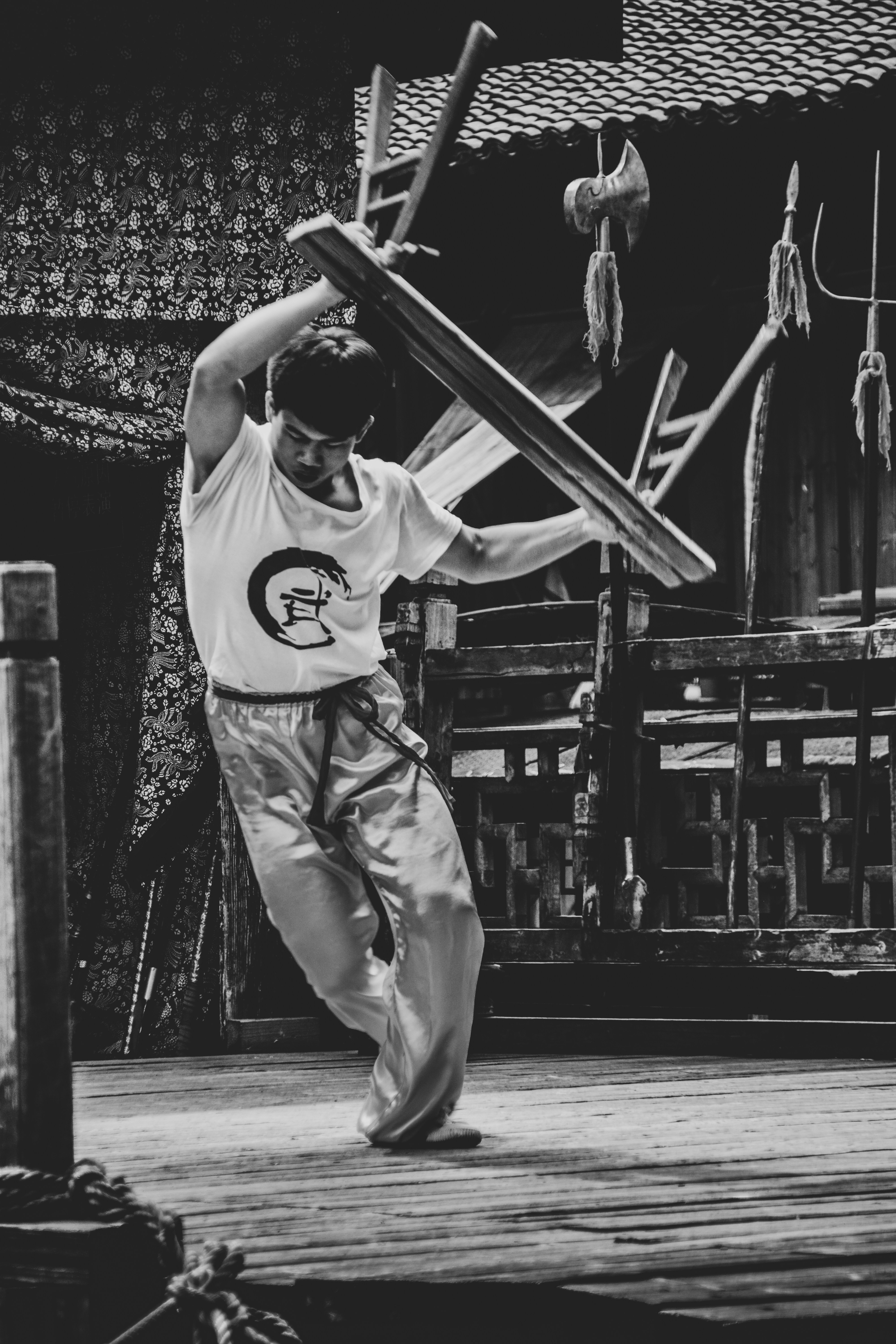For beginners in martial arts or boxing, having a punching dummy can be incredibly beneficial for practice and training.
A punching dummy allows you to improve your technique, build strength, and enhance your overall performance.
While purchasing a punching dummy is an option, making one yourself can be a cost-effective and rewarding alternative.
In this guide, we will walk you through the process of making a punching dummy for beginners.
Gathering the Materials
The first step in making a punching dummy is to gather the necessary materials.
Here’s what you’ll need:
- Old clothes or fabric scraps
- Duct tape
- Sand or old rags for stuffing
- Scissors
- Marker
- Rope or bungee cords
- Old pillow or cushion (optional)
Constructing the Punching Dummy
Once you have all the materials ready, you can start constructing your punching dummy following these steps:
Step 1: Prepare the Clothes and Stuffing
Begin by stuffing the old clothes or fabric scraps with sand or old rags.
This will form the core of your punching dummy.
You can also use an old pillow or cushion as the base for the head and torso if available.
Step 2: Shape the Dummy
Use the duct tape to bind the stuffed clothes together, shaping them into a cylindrical form for the body and a round shape for the head.
Make sure to secure the stuffing tightly to prevent it from shifting during use.
Step 3: Adding Limbs (Optional)
If you want to practice specific strikes or kicks, you can attach additional limbs to your punching dummy using rope or bungee cords.
For example, you can create arms and legs by securing the materials to the body of the dummy.
Step 4: Finishing Touches
Once the basic structure is in place, you can use the marker to draw a target on the dummy to help you focus your strikes.
You can also reinforce any weak spots with extra duct tape to ensure the durability of your punching dummy.
Using Your Homemade Punching Dummy
Now that you’ve completed making your punching dummy, it’s time to put it to use.
Here are some tips for using your homemade punching dummy effectively:
- Start with basic strikes: Begin with simple jabs, crosses, and hooks to get a feel for the dummy’s responsiveness.
- Focus on technique: Use the dummy to refine your technique and form, paying attention to your footwork and body positioning.
- Vary your strikes: Practice a variety of strikes to simulate real combat situations and improve your overall skill set.
- Regular maintenance: Check the duct tape and stuffing periodically to ensure that the dummy remains in good condition for training.
Conclusion
Congratulations! You’ve successfully made your own Homemade punching dummy for beginners.
With regular practice and dedication, your homemade punching dummy can become an invaluable tool in your training regimen.
Remember to always prioritize safety and proper form when using the punching dummy, and enjoy the progress you’ll make in your martial arts or boxing journey.
Incorporating Cardio and Conditioning Exercises
In addition to striking practice, incorporating cardio and conditioning exercises into your training with the punching dummy can significantly improve your overall fitness and fighting abilities.
Here are some examples of exercises you can incorporate:
Burpees
Burpees are a full-body exercise that combine a squat, push-up, and jump.
Perform a set of burpees in between rounds of striking the punching dummy to elevate your heart rate and build endurance.
Jumping Jacks
Jumping jacks are a classic cardio exercise that can be done in short bursts between punching drills.
They help to improve your agility and coordination while also raising your heart rate.
Mountain Climbers

Mountain climbers are another excellent exercise that targets your core and cardiovascular fitness.
Perform this exercise in front of the punching dummy, alternating between striking and mountain climbers to challenge your endurance.
Incorporating Footwork and Movement
Effective footwork and movement are crucial in martial arts and boxing.
Your punching dummy can be a valuable tool for practicing these skills.
Here are some ways to incorporate footwork and movement into your training:
Lateral Movements
Practice lateral steps and shuffles around the punching dummy, striking from different angles and distances.
This will help you develop the agility and footwork needed to evade and counter attacks.
Pivots and Turns
Incorporate pivots and turns around the punching dummy to practice changing the direction of your attacks and defense.
This will improve your overall body control and positioning.
Angle Changing
Move in and out, circling the punching dummy and changing your angles of attack.
This will help you become more elusive and unpredictable in your movements.
Incorporating Defensive Techniques
In addition to offensive strikes, your punching dummy can also be used to practice defensive techniques.
Here are some examples:
Parrying and Blocking
Use the punching dummy to practice parrying and blocking strikes.
This will help you develop the reflexes and hand-eye coordination needed to defend against incoming attacks.
Slipping and Ducking
Practice slipping and ducking movements around the punching dummy to learn how to avoid strikes.
This will improve your ability to evade and counter-attack.
Catch and Riposte
Work on catching the punching dummy’s strikes and following up with your own counterattacks.
This will enhance your defensive skills and set you up for effective counter-strikes.
Incorporating Strength Training
While the punching dummy is primarily used for striking practice.
It can also be incorporated into strength training exercises.
Here are some examples:
Push-ups and Planks
Use the punching dummy as a platform for push-ups and planks.
This will challenge your core stability and upper-body strength.
Squats and Lunges
Hold the punching dummy in front of you while performing squats and lunges.
This will work your lower-body muscles and improve your overall power and explosiveness.
Tricep Dips
Place the punching dummy behind you and use it as a bench for tricep dips.
This will target the muscles in your arms and shoulders.
Incorporating Sparring and Simulation
Once you’ve mastered the basic techniques and exercises with your punching dummy.
You can take your training to the next level by incorporating sparring and simulation drills. Here are some ideas:
Shadow Boxing
Imagine your punching dummy is an opponent and practice shadow boxing around it.
Incorporating footwork, strikes, and defensive movements.
This will help you develop your overall fighting skills.
Specific Scenario Drills
Set up specific scenarios with your punching dummy, such as defending against a kick or countering a combination of strikes.
This will help you prepare for real-world situations and improve your decision-making abilities.
Rapid Fire Drills
Challenge yourself by striking the punching dummy rapidly, focusing on speed, accuracy, and combination strikes.
This will build your hand-speed and reaction time.
Maintenance and Care
To ensure your homemade punching dummy lasts and remains in good condition, it’s important to properly maintain and care for it.
Here are some tips:
Checking for Wear and Tear
Regularly inspect your punching dummy for any signs of wear and tear, such as rips, loose stitching, or shifting stuffing.
Address any issues promptly to prevent further damage.
Re-stuffing and Reinforcing
If the stuffing in your punching dummy starts to become flat or uneven, you can easily refresh it by adding more sand or rags.
Additionally, reinforce any weak spots with additional duct tape or fabric.
Cleaning and Disinfecting
Over time, your punching dummy may accumulate dirt, sweat, and bacteria.
Regularly clean the surface with a damp cloth and mild detergent to keep it fresh and hygienic for your training sessions.
Conclusion
Creating a homemade punching dummy can be a practical and cost-effective way for beginners to enhance their martial arts or boxing training.
By following the steps outlined in this guide, you can construct a durable and customizable punching dummy that will serve as a valuable tool for improving your striking techniques, footwork, and overall fighting abilities.
Remember to always prioritize safety and proper technique when using your punching dummy.
Regularly maintain and care for your creation to ensure it remains in top condition for your training needs.
With dedication and consistent practice, your homemade punching dummy can become an indispensable part of your martial arts or boxing journey.
Let us know about your thoughts on Homemade Punching Dummy.






